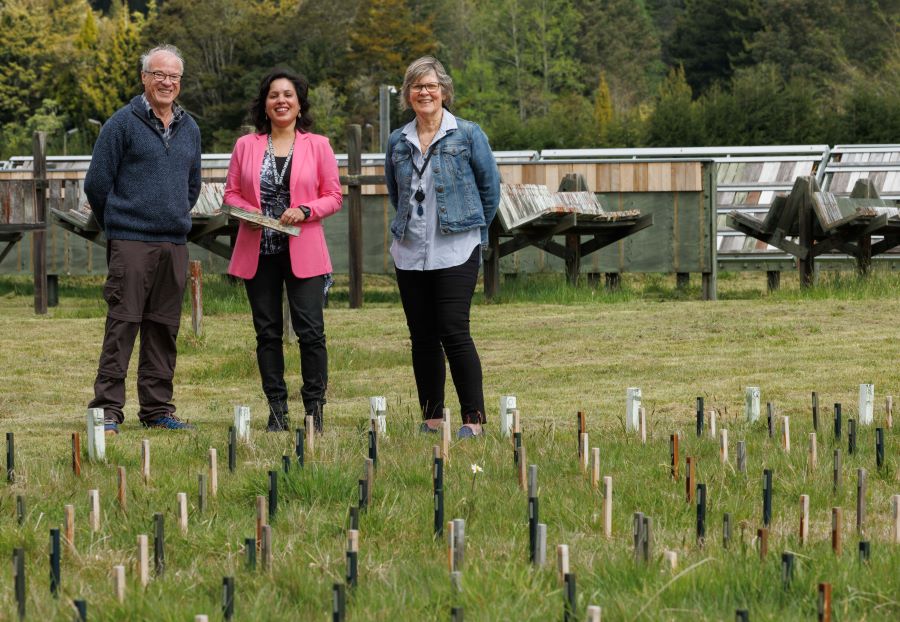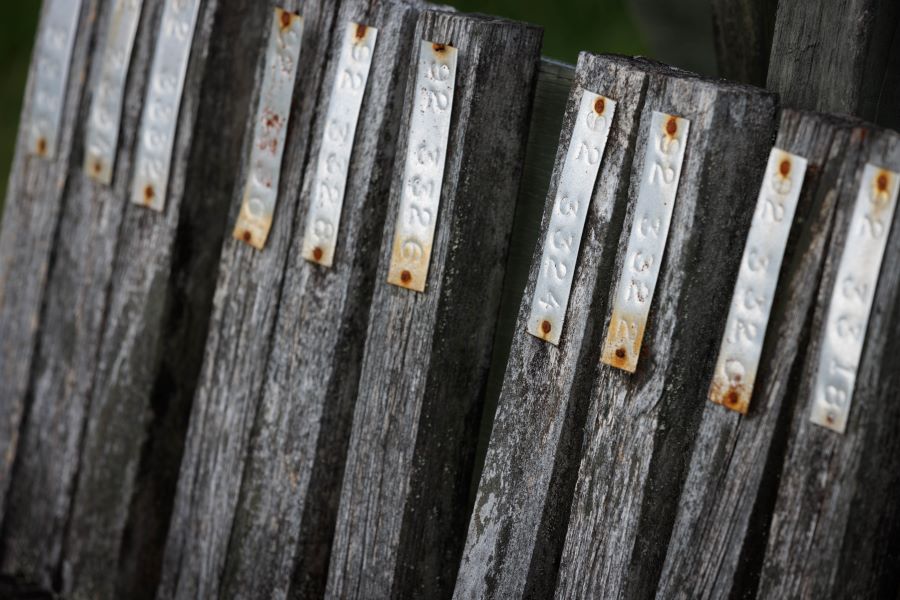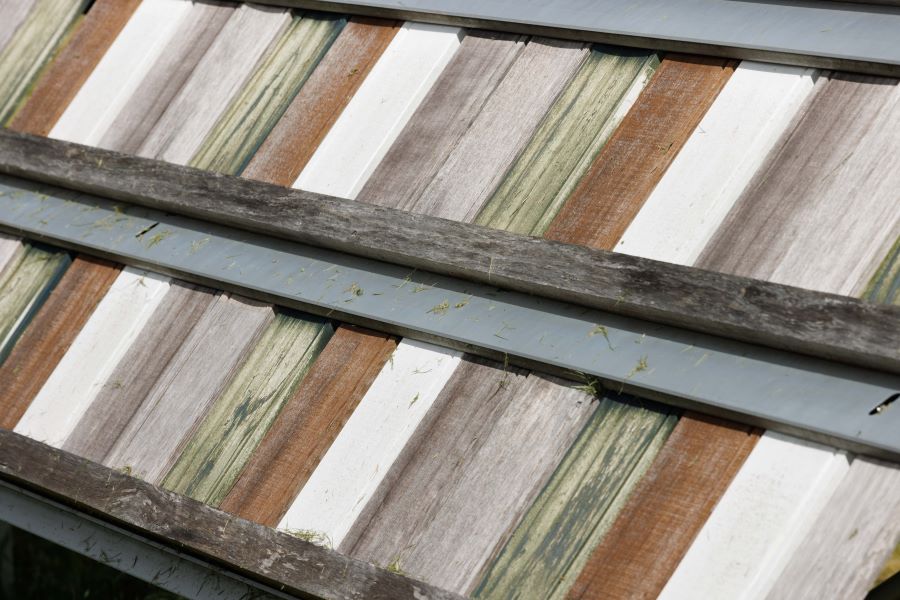Outdoor lab a vital tool for New Zealand
Information from the ‘lab’ is critical for developing building standards.
In a field on the side of a publicly accessible road on Scion’s Rotorua campus you’ll find tall, power pole-like structures, L-shaped joints sitting on what looks like park benches, decking at various stages of decay, rows of cladding and wooden stakes sticking in the ground.
It isn’t a strange half-finished building site or dilapidated wood storage, it is vital strategic infrastructure for Scion and the whole country. The site is one of four forming the National Wood Performance Archive, and the biggest and most comprehensive.
Collectively, the information gathered from the sites about wood durability provides a foundation for the timber industry and helps inform building practice standards and compliance. The testing is used to establish durability classifications for timber grown here and overseas. They include products from international companies wanting to launch in New Zealand.
Information from the sites combined with information about structural performance established in Scion’s timber engineering lab informs how suitable wood products are for particular purposes.
Scion’s site includes above-ground tests like decking, cladding and joinery, and in-ground stakes, posts and poles while the three remote sites – near Whangārei, Hanmer and Waitarere – only have in-ground stakes.
Scion deliberately selected test sites with different environments and soil types to get a range of information.
Scion’s field sites were established in 1947 meaning we hold more than 75 years of wood durability and performance records.
Data is collected from the samples annually. Scion’s site has around 50 trials with different anniversaries, so testing takes place multiple times a month, while the other three sites are only visited once a year.

Dr Tripti Singh, Scion’s leading timber durability expert, says the main purpose is to test timber durability – how long a product lasts for what purpose.
For Singh, Scion’s site is like “an outdoor lab”.
“We’re looking at product performance … Durability is one side of that, other aspects like structural stability and fitness for purposes are the others. They are correlated and we need data from various sources to establish the product’s performance.
“Each product has advantages and disadvantages determining its end use and what is the right wood for the right use is the key.
“For any new timber species including hybrid species, we have to define what durability class that species sits in,” Singh says.
Scion also tests new formulations and treatments that protect timber to see if they are effective. Some tests last decades as durability class can only be determined when the last sample fails.
Maintenance is carefully completed. The ground around the tests can’t be mowed by contractors or sprayed with products that could inhibit natural flora and fauna. Weeds are pulled by hand and in summer maintenance can be a “big mission”.

The trials have also produced surprising results, for example one fungus isolated from the site can be used in biotech applications due to the very specific enzymes it produces.
General Manager, Forest to Wood Products, Dr Henri Baillères says the sites are a “strategic infrastructure used on an everyday basis”.
“For any species not in the building standards … the field test site is a facility enabling us to provide the data to inform whether it is meeting requirements and can be used or not.”
Scion is the only organisation in New Zealand doing this type of testing to inform building standards. Without it, new products would not become compliant or available for construction, Baillères says.
“It’s very strategic for New Zealand, Scion, and our industry and other players across the value chain,” Baillères says.

Dr Bruce Deam, a senior structural engineer at the Ministry of Business, Innovation & Employment who has been involved with building standards development, says the fact New Zealand has specific building code requirements for durability makes it unique. He says the Wood Performance Archive is an essential way of demonstrating long-term durability and has been hugely worthwhile for both ground contact and exterior exposure testing.
“Over the long-term it helps confirm that durability expectations have been met, showing the in-ground and exterior timber meet the performance requirements for use in buildings.”
Our sites are listed at IRG/WP (International Research Group on Wood Protection) website.
